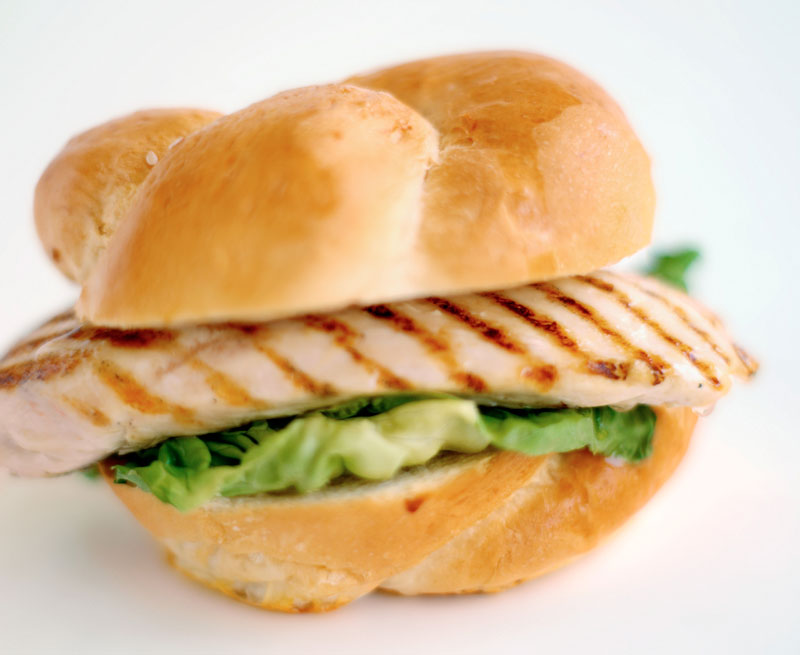Q: We’re feeling pressure to offer more healthy options, but how should we do healthy food? After all, we’re a burger-and-fries joint!
A: Between New York City Mayor Bloomberg’s announcement of a potential ban on large drink sizes, the proposed FDA menu-labeling plan, and all the controversy surrounding McDonald’s “Champions of Play” campaign during the Olympics, it’s no wonder you’re feeling pressure to go healthy. Ambitious politicians, advocacy groups, and many media outlets would have you think that the fast-food industry is the main driver behind rising obesity rates and other health issues in our nation.
While that’s a distorted perspective, plenty of people are indeed looking for healthier options at our restaurants. According to a recent study by the National Restaurant Association, 73 percent of consumers say they now try to choose healthful items when they go out to eat.
So what exactly constitutes a “healthful item”? The most common definitions are “low fat” and “low calorie,” and some restaurants are well positioned to compete with a healthy approach based on a nutritional claim. Taco Bell promotes its Fresco Menu, which has several items containing less than 9 grams of fat and 20–100 fewer calories than similar products on the chain’s regular menu.
Many companies stand out because their entire concept centers on these “low” claims. At Energy Kitchen, the New York–based chain of 15 stores selling burgers, sandwiches, and wraps, every item has fewer than 500 calories. Perhaps the strongest player in this area is Subway, which recently became the first quick-serve chain to apply and meet the American Heart Association’s Heart-Check Meal Certification Program nutritional criteria.
For many other quick serves, these kinds of approaches are neither possible nor desirable. Your products may not lend themselves to nutritional claims, and you may not want to do anything to detract from your brand identity, which might have nothing at all to do with health. Or maybe you don’t want to alienate your core customers who aren’t interested in low-fat or low-calorie food.
Not a problem. Health means different things to different people. There are several ways you can improve the health perceptions of your offerings. You don’t have to limit yourself to adding salads or changing your recipes in order to satisfy people’s desires for better-for-you options. Doing so will only lead you into areas where other chains have more of an advantage. Here are a few alternate approaches:
Consider using a “fresh” angle with your products and menu. Five Guys Burgers and Fries enjoys a healthy halo because its food is fresh. By filling its stores with boxes of locally sourced potatoes and promoting the absence of freezers in its restaurants, the chain makes its food seem better for you than most fast-food burger brands. California-based Pick Up Stix, meanwhile, emphasizes “fresh” with an open kitchen and food that’s not cooked until you order it.
Simplicity is another possible way to improve health perceptions. Chick-fil-A is considered healthy by some because of the simplicity of its products and menu. Its classic chicken sandwich is composed of only three ingredients: a chicken fillet, dill pickle chips, and a bun. This bare-bones approach appeals to people who perceive simpler ingredients and builds are more pure and natural, and therefore healthier.
Natural and sustainable ingredients are what make people consider Chipotle a healthy choice, despite its 1,000-plus-calorie burritos. “Food with Integrity” is the lens through which the company talks about its commitment to sustainably raised food, meat, and milk from animals raised without antibiotics or added hormones, and organic and local produce. Earlier this year, the chain boosted its health perceptions through a TV commercial that promoted its use of food from sustainable farms. Chipotle’s website makes its point of view on health clear: “It’s very important to consume only as many calories as is recommended in a day … [but] foods that are unprocessed and un-tampered with (like at Chipotle) are more filling and nutritious than the synthetic foods you might find at other restaurants.”
Wholesomeness is the key to the healthy perceptions Panera Bread enjoys. With a website that declares, “We are bakers of bread”; a restaurant layout that emphasizes its bakery offerings; and the “Hot bread!” cheer that its crew members exclaim when pulling bread from the oven, Panera relies heavily on bakery cues. A bakery conveys wholesomeness, which in turn conveys healthfulness for many because it seems closer to homemade.
Panera recently employed another approach with the launch of its Eat Smarts game. The online game promotes the fun of making healthy food choices while offering prizes like a vacation getaway. Using a promotional program enables the chain to highlight the healthier aspects of its menu in a way that is consistent with its brand personality and attributes, but doesn’t detract from messaging that promotes its more indulgent offerings.
These examples demonstrate that health is in the eye of the beholder. Pick the approach that resonates most strongly with your target audience and leverages the uniqueness of your concept. You’ll be doing healthy with integrity, which will make everyone feel good about what they’re eating at your restaurant.












